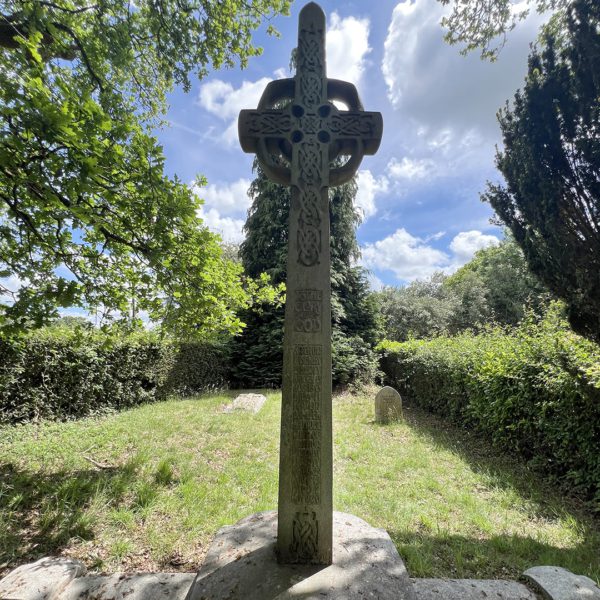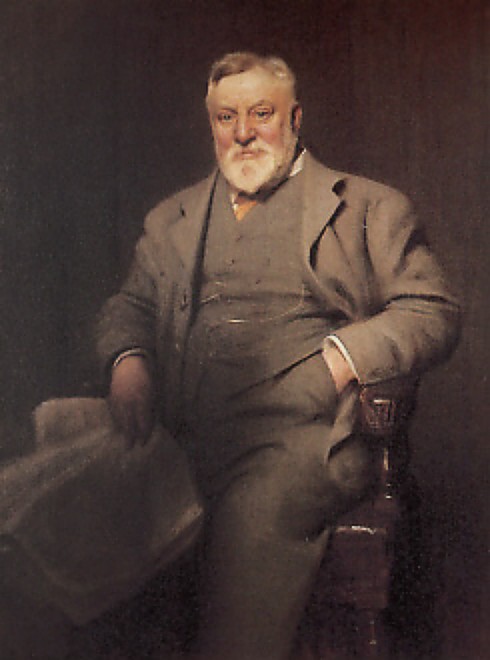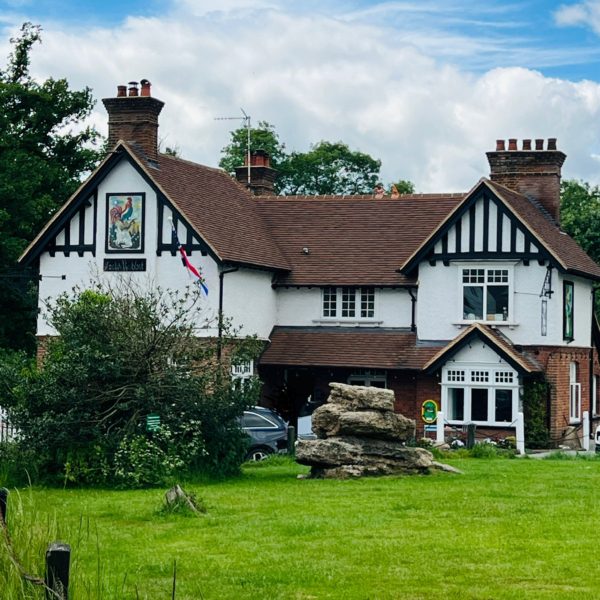 A Chesham-bred store celebrates its 150th annniversary!
A Chesham-bred store celebrates its 150th annniversary!
– and the local legacy of Arthur Lasenby Liberty
Liberty, the iconic London store, marks its 150th anniversary in 2025. Born in Chesham, its visionary founder set new fashions and reshaped his home village of The Lee.
Arthur Lasenby Liberty was born in Chesham in 1843. His father owned a draper’s shop at 12 High Street, selling fine linen and other fabrics. (This premises is now a tanning salon).
When the family moved away, Arthur regularly stayed with his grandparents at Chartridge Farm, near The Lee. At 18 he started work at Farmer and Rogers Great Cloak and Shawl Emporium in Regent Street, where he became manager of the Oriental Department. In 1875 he borrowed £2,000 from his future father-in-law and opened his own store at 218a Regent Street. With just three dedicated staff he began selling coloured silks and other goods from Japan.
The venture was an instant success. Within eighteen months Arthur had repaid the loan and acquired the lease to the other half of his Regent Street store.
Opulence and style
‘From the start’, he said, ‘I was determined not to follow existing fashions but to create new ones.’ By 1880 Liberty’s had begun importing from Cairo, India and China as well as Japan. Arthur’s business instinct was unerring. Liberty’s ‘exotic’ collection of opulent ornaments, fabric, furniture and objets d’art proved irresistible to shoppers eager for goods from the East.
Success brought new challenges. As demand outpaced imports, it became necessary to source merchandise from home. Liberty’s began in-house production, working with William Morris and other contemporary British designers. Liberty & Co became, in the words of Oscar Wilde, ‘the chosen resort of the artistic shopper’.
In 1913, Arthur Lasenby Liberty was knighted for ‘services to the applied and decorative arts’. By that time, the company he founded employed over a thousand people in premises in London, Birmingham and Paris.
A flagship store
Liberty’s famous flagship store was built in the 1920s, to fulfil Arthur Lasenby Liberty’s own nautical vision. He imagined it as a ship full of goods from around the world, docking in the middle of London. The mock-Tudor extension to the store was even constructed with timbers from two former Royal Navy ships, the HMS Impregnable and HMS Hindustan. Its overall design was ornamental and stylish, to match the goods sold within it. Sadly, Arthur died at The Lee in 1917, before his vision became reality.
 Life at The Lee
Life at The Lee 
A fast-growing fortune had enabled Arthur Liberty to settle in The Lee, a village he knew and loved. In 1880 he rented the historic Manor House, before buying the Manor Estate in 1898. He set about enlarging the Manor House, funding new facilities and altering features of the village.
As Lord of the Manor he cleared the village green, rebuilding and positioning the Cock and Rabbit pub as seen today. He contributed to the restoration of The Lee Old Church and gave land for the vicarage and an extended graveyard. He underwrote the whole cost of building the New Church of St John the Baptist, donating nearly £3,000. He installed the first public telephone and built the Guild Room opposite the green as a social centre and meeting room.
To commemorate Queen Victoria’s Diamond Jubilee, and improve the public water supply, Arthur also commissioned the hexagonal Well House in Lee Common. It was designed and built by Liberty’s craftsmen, with five oak panels and an oak gate beneath a tiled roof. The 365 ft shaft was dug by hand, using candles for illumination and bellows for ventilation.


The legacy
Sir Arthur died in 1917 and was buried in the graveyard of St John the Baptist Church. His heir, his nephew Ivor Stewart-Liberty, inherited an estate of over 3,000 acres. It stretched beyond the parish boundaries and provided employment in some form for nearly every family in the village.
A resident of The Lee, Ivor Stewart-Liberty also inherited his uncle’s duties as Lord of the Manor. He made his home at Pipers, the house built for him by his uncle in a lane some 250 metres from the village green. Watching over the entrance to Pipers is the figurehead of Admiral Lord Howe, taken from the Royal Navy’s last wooden warship HMS Impregnable, formerly HMS Howe. Fittingly, this was one of the ships whose timbers are built into Liberty’s Regent Street store.
The Lee Flower Show, which takes place at The Lee Manor Park every year in July, is another popular legacy of Sir Arthur’s that lives on today. Introduced in 1893, it has over 100 exhibiting classes, attracting visitors from the village and well beyond.
More information and further links about the village of The Lee

 A Chesham-bred store celebrates its 150th annniversary!
A Chesham-bred store celebrates its 150th annniversary! Life at The Lee
Life at The Lee 
